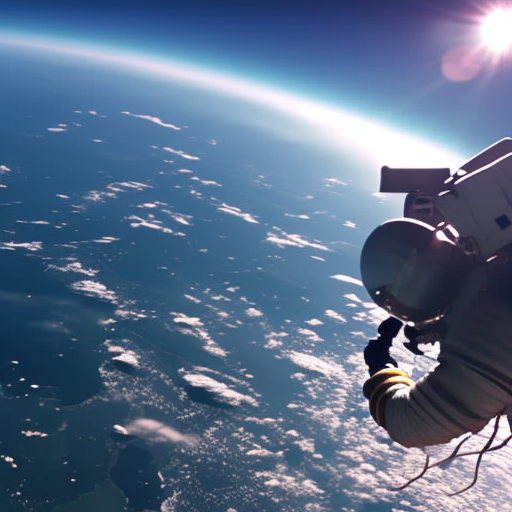Extravehicular activity (EVA) refers to any activity performed by an astronaut outside of their spacecraft while in space. EVAs are crucial for various purposes, such as conducting experiments, repairing equipment, and maintaining spacecraft. This summary will explore the history, challenges, and future of EVAs.
History of Extravehicular Activity
The first EVA took place on March 18, 1965, during the Voskhod 2 mission, when Soviet cosmonaut Alexey Leonov spent 12 minutes outside the spacecraft. The first American EVA occurred on June 3, 1965, during the Gemini 4 mission, with astronaut Ed White spending 23 minutes outside the spacecraft. Since then, EVAs have become a routine part of space missions.
Challenges of Extravehicular Activity
Performing EVAs presents numerous challenges for astronauts. One of the primary challenges is the lack of gravity, which affects the way astronauts move and handle objects. Without gravity, astronauts must rely on tethers and handholds to stay attached to their spacecraft. Additionally, the extreme temperatures in space pose a risk to astronauts, as they can experience both extreme heat and extreme cold during an EVA. Astronauts must wear specially designed spacesuits that provide insulation and temperature control.
Another significant challenge is the limited visibility and communication during EVAs. The helmets of spacesuits often fog up, making it difficult for astronauts to see. To overcome this, spacesuits are equipped with lights and cameras to improve visibility. Communication is also challenging, as sound does not travel in the vacuum of space. Astronauts rely on radios and hand signals to communicate with their crewmates and mission control.
Tools and Techniques for Extravehicular Activity
Astronauts use a variety of tools and techniques to perform tasks during EVAs. They carry toolboxes filled with specialized tools, such as wrenches, drills, and cameras. Tethers and retractable reels are used to secure astronauts to their spacecraft and prevent them from floating away. Astronauts also use foot restraints and handrails to provide stability and leverage while working.
Future of Extravehicular Activity
As space exploration continues to advance, the future of EVAs holds exciting possibilities. One area of focus is the development of advanced spacesuits that provide increased mobility and flexibility. NASA’s next-generation spacesuit, the Exploration Extravehicular Mobility Unit (xEMU), will allow astronauts to explore the lunar surface during the Artemis missions.
Another area of interest is the use of robotic assistants during EVAs. Robots could assist astronauts by performing tasks that are too dangerous or time-consuming for humans. For example, robots could be used to inspect and repair spacecraft, reducing the need for astronauts to perform risky EVAs.
Furthermore, the future of EVAs may involve the utilization of new technologies, such as augmented reality (AR) and virtual reality (VR). AR and VR could enhance astronauts’ situational awareness and provide them with real-time information during EVAs.
In conclusion, extravehicular activity plays a vital role in space exploration. Despite the challenges posed by the lack of gravity, extreme temperatures, and limited visibility, astronauts have successfully performed EVAs for decades. The development of advanced spacesuits, the use of robotic assistants, and the integration of new technologies like AR and VR are expected to shape the future of EVAs. As we continue to explore the cosmos, EVAs will remain an essential tool for astronauts to conduct experiments, repair equipment, and push the boundaries of human exploration.












